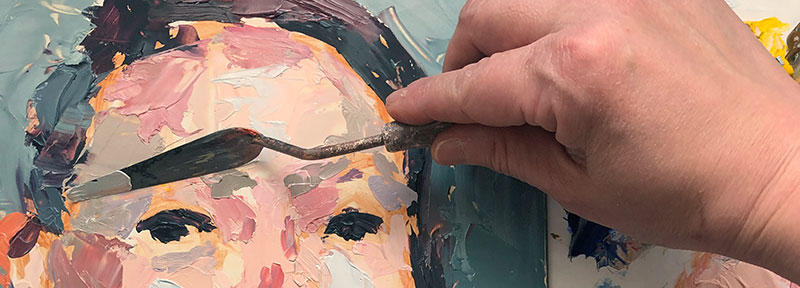This video walks through basic tips on how to compose a portrait, citing strategies for placement of the head, neck and shoulders to create a dynamic composition.
Using examples from both contemporary art and art history, concrete, practical tips for how to consider the posture of the neck and shoulders, the mass of the hair, the range of textures and surfaces in portraits, are explored.

Other elements, such as the potential for distortion and caricature by exaggerating the proportions and facial features are explained. Discussion led by Art Prof Clara Lieu.

Video Walkthrough
- A portrait is not only the face
- Lighting in a portrait
- Blocking large shapes
- Posture of the figure
- Palette knife
- Proportions
- Distortion in a portrait
- Stylistic choices
- Structure of the face

Prof Lieu’s Tips

I think often when people are learning, there are aspects of the art making process that they’re not necessarily bad at.

It’s often more that they just haven’t had pointed out to them, so they didn’t even know to think about it! Composition is a skill that is like that, often it’s never even occurred to people to think about it.

A big part of learning is identifying all of the various facets of an artwork, and learning how to address them individually, and as a whole.
Artists Mentioned

- Dana Schutz
- Francis Bacon
- Marc Quinn
- Marilyn Minter
- Leon Golub
- Young Flavian Woman
- Jenny Saville
- Amedeo Modigliani

As a free educational source, Art Prof uses Amazon affiliate links (found in this page) to help pay the bills. This means, Art Prof earns from qualifying purchases.



